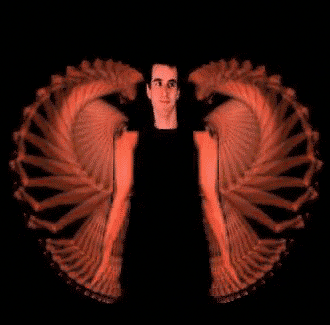Our project has two paths that are about to merge, one being the WREX exoskeleton, and the other being the muscle stimulation.
The WREX has taken up most of our time, and we we now have a design to start building a working model off of. Last week, we sanded down our thoughts on how the levers and joint would function. Now we have a 3D model of the WREX arm thanks to Will, based off of measurements taken from out arms, and off some geometry Carl ran up.
This coming week will consist of use putting together the initial materials for manufacture, and once compiled, figuring out:
- How to attach it to a chair.
- How to make the shoulder joint strong enough to support our arm.
- Where and how to place the joints and leverage points (rubber bands).
- How to attach to arm itself (molded cast / velcro).

The second path is the electrical stimulation. We received the device in the mail last week, and I have taken the liberty of trying it out, on myself and others. I have found that different users have different responses, and that to get the widest range of motion, the user’s muscles must already have some relative strength to them. Users who did not have “strong” arms were not able to get their elbows close to 90 degrees, while others were easily able to reach that point.
While the first and most obvious muscle to jump after was the bicep, we also looked at the forearm and shoulder muscles. The shoulder muscles were difficult to control, as they are very close to each other, and require a high level of current to get movement. Also, they’re a little too close to the chest (heart) for my comfort. The forearms, however, were easy to manipulate, and required less current. Namely, the wrist flexors, on both the top and bottom of the forearm, were easy to control, and created movement with half as much current as needed for the bicep and shoulder. We were able to reach 90 degrees from most testers. We tried both a steady pulse width, at 40hz most of the time, but occasionally tried much lower frequencies to achieve a jumping effect in the muscle.
Once we are able to combine these two paths, we will then start working on hacking our stimulator, so that we can control the pulses without having to interact with it’s built in buttons. This is a scary step, because we don’t want to break it, plus it’s electricity…going into our bodies. The most viable approach would seem to be opening up the device, finding the contact points that the buttons close, and manipulating those through first our own switch, and then perhaps a transistor so that we can control it with software.








 After a quick search for biomechanics and music, I came across the neurologist
After a quick search for biomechanics and music, I came across the neurologist